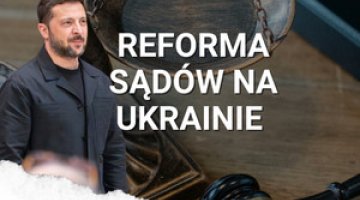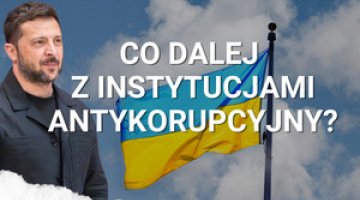The beginning of the election campaign in Ukraine
18 August saw the end of the process of registering candidates for election to the parliament of Ukraine. In the proportional elections (for 225 seats) 22 parties will compete, while in the majority seats (also 225 places) 3100 candidates will stand representing 89 parties; this means that in most districts 25-30% of the vote will be enough to win (elections are decided by a plurality of votes).In the proportional elections, the parties most likely to win over 5 percent are the Party of the Regions; the United Opposition 'Batkivschyna' [‘fatherland’]; Vitaliy Klichko Party 'Ukrainian Democratic Alliance for the Reforms 'UDAR' [‘strike’, ‘hammer-blow’] Party; the Communist Party of Ukraine; and perhaps Nataliya Korolevska Party 'Ukrajina – Wpered!' [‘Ukraine, Forward!’] and the nationalist All-Ukrainian Association 'Svoboda' [‘freedom’] parties. The top two parties had similar levels of voter support in early August (see Appendix 1). Most of the parties are running on populist slogans, and are not offering comprehensive political programs.
Commentary
- The Party of the Regions’ list of candidates demonstrates the drop in importance of one of the key groups in the party – the RosUkrEnerho (RUE) group linked to businessman Dmytro Firtash and the head of the Presidential Administration Serhiy Lovochkin – and the strengthening of the Donetsk political and business group (including the allies of Rinat Akhmetov and the so-called ‘family’ associated with President Yanukovych’s son Oleksandr). Given that the party list has been personally approved by President Yanukovych, it can be concluded that the friction between his circle and Akhmetov’s is now a thing of the past. It is noteworthy that neither Akhmetov nor his main competitors, Dmytro Firtash and Valeriy Khroshkovski, are standing for election; the Party of the Regions’ electoral list is being headed by Prime Minister Mykola Azarov.
- The spring of 2012 saw the formal unification of the two main opposition parties, Yulia Tymoshenko’s ‘Batkivshchyna’ and Arseniy Yatsenyuk’s Front for Changes, which have formed the United Opposition 'Batkivschyna'. This step has significantly increased their chances of victory. In addition to Yatsenyuk and his associates, representatives of several small opposition parties are also standing on the joint ticket. It is important that the United Opposition and Svoboda have agreed to divide up the majority seats among themselves, as this increases the chances of the two groups winning in individual districts. The electoral list gives a definite advantage to Batkivschyna politicians in the future; Yatsenyuk, who is heading the list, will not receive much support from them.
- A new political force which has declared its opposition to the Party of the Regions is Vitaly Klichko’s UDAR, which is made up of a very wide range of social activists and politicians, ranging from the former Prime Minister of Crimea Serhiy Kunitsyn, who in the past was associated with the RUE group, to Yulia Tymoshenko’s former speechwriter, Vitaly Chepynoha. The party’s list also includes people associated with the oligarch Ihor Kolomoyski. This supports the view that the party has no clear political program, and in the new parliament it could work either with a coalition government or with the opposition.
- Many important politicians of all parties have failed to find spaces on the party lists. Some of them will fight for majority seats with the support of their parent party, or even without it. The competition in these districts will be more desperate than those being competed for under the proportional representation system.
Appendix 1. Popularity polls for the main political parties
According to a survey published on 17 August conducted jointly by four Ukrainian public opinion organisations, including the Razumkov Centre, if elections were held in July and August, those who declared they would participate in the elections (percentage not given) said they would support the main political parties in the following proportions:
United Opposition 'Batkivschyna' 26.2%Party of the Regions 24.6%
UDAR 11.8%
Communist Party of Ukraine 9.4%
Nataliya Korolevska Party 'Ukrajina – Wpered!' 4.3%All-Ukrainian Association 'Svoboda' 4.2%
undecided 15.4%
48.9% of this group of respondents are “quite sure” of their choice, and 43.5% are “almost certain”. However, it should be borne in mind that we do not know what percentage of respondents refused to participate in the study, which could significantly distort the results; moreover the election campaign, including the battle for the votes of the undecided, is only just beginning.
Appendix 2. The main political parties taking part in the elections
The Party of the Regions
Leaders: Mykola Azarov (formal), Viktor Yanukovych (de facto). The largest and best-organised political party in Ukraine. It does not depend on its political programme (which is only of importance as propaganda), but rather on the interests of big business groups, primarily related to the Donetsk and Luhansk regions (these include Rinat Akhmetov’s group, the so-called ‘family’ surrounding President Yanukovych, and others) and the ‘non-Donetsk’ RUE group. The party’s support is concentrated in the south and east of the country, but is also rising in other regions. After a decline in popularity at the beginning of this year, support for the party is clearly rising.
United Opposition 'Batkivschyna', formerly the All-Ukrainian Association Batkivschyna'
Leaders: Arseniy Yatsenyuk (formal), Yulia Tymoshenko, Oleksandr Turchynov and Hryhoriy Nemyria (de facto). A strong political party with a populist and nationalist programme (the latter aimed mainly at the west of the country), primarily focused around its leader. Its support is concentrated in the west and centre of the country. For a long time its ratings were stable (over ten percent), but these have risen significantly since the unification with Yatsenyuk’s Front for Changes.
Vitaliy Klichko Party 'Ukrainian Democratic Alliance for the Reforms 'UDAR'
Leader: Vitaly Klichko. This new group (established in 2010) has declared its objectives to be a fight against corruption and Ukraine’s integration with Europe. Its actual programme and political interests remain unclear, as are its sources of funding. Judging from its activities so far, it is counting on electoral support in the central and western parts of the country. Its support is rising slowly.
Communist Party of Ukraine
Leader: Petro Symonenko. Continuation of the Ukrainian Communist Party of the Soviet Union; espouses an orthodox Communist programme. Organisationally and intellectually weak; politically it has long been informally subordinate to the Party of the Regions. Its support is concentrated in the south and east of the country; it is noteworthy that its popularity has been rising again recently (in the 2006 elections it won 3.6% of the vote, but today it polls from 8 to 11%, according to various surveys).
Nataliya Korolevska Party 'Ukrajina – Wpered!' Party
Its leader is Natalia Korolevska, who until 2011 was associated with the Tymoshenko Bloc. This new grouping was in all likelihood created by the Party of the Regions in order to reduce support for the United Opposition in Kyiv and Dnipropetrovsk. It is mainly known because for several months now it has conducted a very active and expensive propaganda campaign promoting its leader and propagating populist demagogy.
All-Ukrainian Association 'Svoboda'
Leader: Oleh Tiahnybok. The main grouping of the Ukrainian nationalist right. It espouses a nationalist and populist programme, is well organised, and – alone of the parties listed here – has an ideological basis, focused on its programme, and it does not serve any other purpose or interests. Its radicalism limits its hope of building up an electorate outside eastern Galicia and (to a lesser extent) western Volhynia; outside these areas it is only supported by emigrants from Galicia. Its support is quite stable.
Other political parties participating in the proportional mandates:
(in order as given by the Central Election Commission)
All-Ukrainian Association 'Hromada';
the Green Party of Ukraine;
the Ukrainian National Assembly (radical nationalists);
the Socialist Party of Ukraine;
the Liberal Party of Ukraine;
the Ukrainian Platform ‘Sobor’ [congregation] (moderate nationalists);
the Pensioners’ Party of Ukraine;
the Political Party 'New Politics';
the Party 'Rus’ Bloc' (Russophiles);
Our Ukraine (the party of Viktor Yushchenko, which has been ‘reanimated’ at the last minute);
the Ukrainian Party 'Green Planet';
thePolitical Party 'People-Labour Union of Ukraine' (probably socialists);
the Political Party 'The Future Ukraine';
the Political Party 'The Greens';
the Political Assembly 'Ridna Vitchyzna' [native fatherland];
the Oleh Lashko Radical Party (radical populists).





